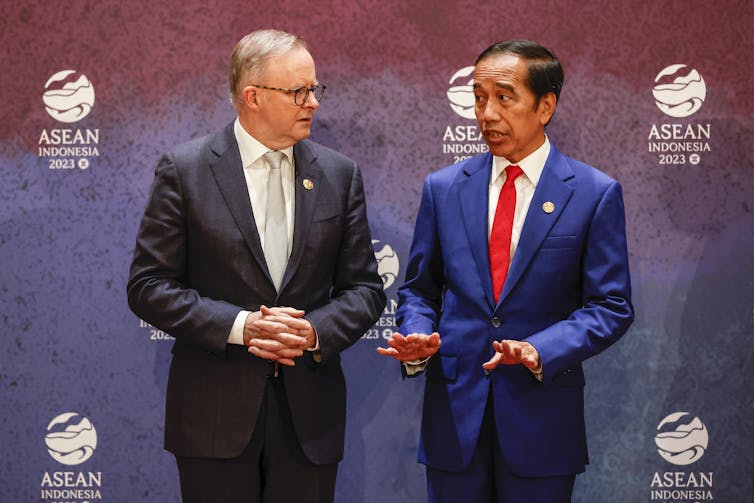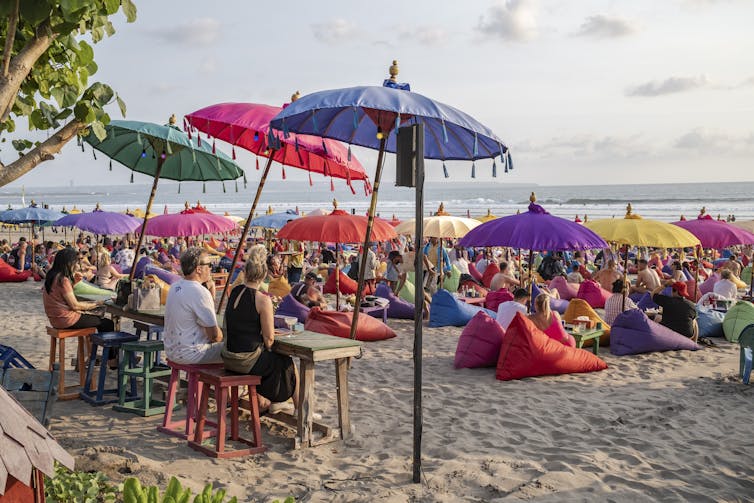Australia’s Year 12 students are in the middle of making important decisions about their futures. For many, this will involve choosing a university course and the subjects within that.
But if trends are anything to go by, Indonesia won’t figure in these decisions at all, despite its enormous economic, strategic and political importance to Australia.
Many politicians have spruiked the importance of learning Indonesian. But to borrow the words of former Prime Minister Paul Keating, this is “all tip and no iceberg”.
In fact, you’d have to go back to the Keating era to find a concerted government effort to understand Asia.
As Indonesia researchers, many of us got our start in that era. But since then, we’ve watched Australia’s Indonesia literacy – our knowledge of our neighbours’ language and culture – slowly die of neglect.
So, what’s happening? What does Australia get wrong? And is there anything we can do about it?
Australia’s declining Indonesia literacy
This semester, Sharyn had fewer than ten students in her introductory Indonesian course at Monash University. This course is for students without any prior knowledge on Indonesian. The intermediate Indonesian class - which includes former Year 12 students entering university - had 13 students.
This low number of enrolments isn’t a blip, it is part of a national trend.
In 1992, there were 22 Australian universities teaching Indonesian. By 2022, this number was down to 12.
There has also been a huge drop in students studying Indonesian to the end of high school. The number of Victorian high school students taking Indonesian in Year 12 has fallen from 1,061 in 2002 to 387 in 2022. In New South Wales the figure slumped from 306 to 90 over the same period.
There are some bright spots. Since 2014, young Australians have travelled to Indonesia under the New Colombo Plan. For example, this year, about 400 first-year Monash students will go to Indonesia for two weeks. However most of the trip will take place in English.
What Australia gets wrong about language
A key part of the problem is previous Australian and Indonesian government campaigns to encourage Australians to learn Indonesian have missed the mark.
Our research has found campaigns that focus on the economic and strategic importance of Indonesia rarely resonate with students.
This is because these narratives are too esoteric and future-based for teenagers, who are often more swayed by youth and popular culture. For example, since 1998 more than 1,000 students per year have studied Japanese in Victorian high schools, in part driven by wider interest in Japanese pop culture.
A monolingual mindset
We also know Australia has a “monolingual mindest”. There is an attitude Australians don’t need to learn other languages. Former Prime Minister John Howard typifies this attitude, arguing English is the lingua franca – or common language – in Asia.
According to the 2018 PISA results (which compare 15-year-olds’ academic progress across countries), Australia ranked second to last among OECD countries for foreign language learning.
The study also found 64% of Australian 15-year-olds said learning a foreign language was not part of their lives, compared to an overall OECD average of 12%.

Meanwhile, China is learning Indonesian
But while Australia’s Indonesian literacy is declining, China’s Indonesian literacy is on the rise. In China, there are now 19 universities teaching Indonesian.
Indonesia’s Chinese literacy is also on the rise. There is significant anecdotal evidence Indonesians are starting to learn (once-banned) Mandarin as the Indonesian government seeks to improve ties with China.
At the same time, Indonesia has begun pushing menduniakan bahasa Indonesia or “to elevate Indonesian to a global status”. This means some Indonesians want to have their language widely spoken and understood globally, especially in Asia.
Australia will fall behind
Australians may continue to speak to a segment of Indonesian society through English. But if they do so, more and more conversations will take place without them.
It can be hard to find exact numbers on English speakers in Indonesia and how well English is spoken. There are some estimates of up to 30% – often promoted by the English tutoring and teaching industry. However, some academic sources suggest only 5% of Indonesians have “a functional command of English”.
Research also suggests English-only speakers are at a disadvantage during discussions with non-native English speakers.
In business meetings, native speakers are less likely to accommodate or understand what is happening in non-native English interactions and more likely to interrupt.

We need pelangi or rainbow thinking
Fixing this issue will need a range of approaches, or what we have been calling pelangi (rainbow) thinking.
First, we need to revisit government investment. The high point for Indonesian studies in Australia was the mid-1990s when Keating invested significant funding into Indonesian language learning. The number of Indonesian language learners in Victoria doubled from 493 in 1995 to 1,044 in 2001.
Second, some of this funding should be dedicated to more innovative and sustainable approaches to language. For example, the US government funds the STARTALK program, which provides grants for school students to study “critical need” languages, including Arabic, Chinese, Korean, Persian and Russian.
This program seeks to better understand the motivations and barriers to learning less commonly taught languages and then designing curricula to meet the needs of teachers and students.
We have previously argued a similar program could be successful and sustainable in Australia. But it needs adequate funding.
Third, Indonesian needs a proper champion. The Korean government’s Academy for Korean Studies provides significant overseas investment in research and education in Korean language and culture. The Alliance Française has 31 branches across Australia.
Indonesian has not yet made a similar, robust investment.
In the last few decades, it’s been hard to avoid government and business officials talking about the importance of Indonesia. But it’s much harder to find a well-resourced person or organisation actually doing something about it.
Read more: Beyond boats, beef and Bali: Albanese's unfinished business with Indonesia


